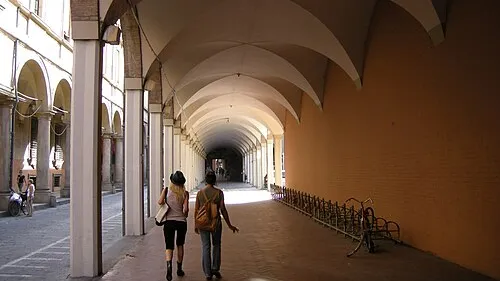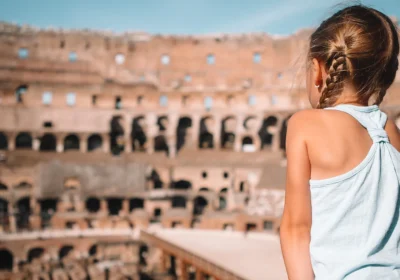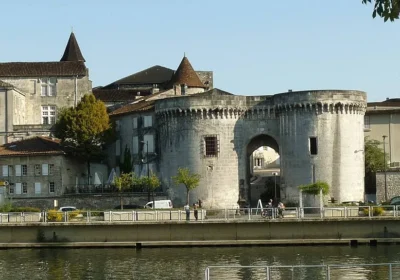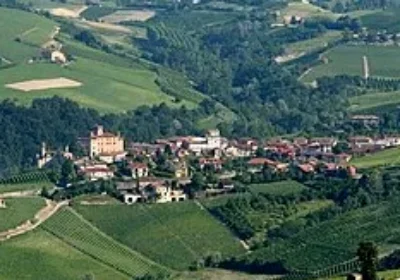The tour starts in Piazza Malpighi (p.zza Malpighi), where the sarcophagi of the three glossators are located. It is also home to the Church of St Francesco, where the first medical faculty was located. In 1211 the Younger Brothers of the Franciscan Order arrived in Bologna and, following an address by St Francis to the people of the city, the Commune granted the Order a plot of land to build its church, which began in 1235 and was completed in 1263. Next head to the main square, Piazza Maggiore, where you visit the Cathedral of St Petronius, dedicated to the patron saint of the city. The church was laid out in 1390 by the architect Antonio di Vincenzo. The works continued until the XVII century, but the church was never completed. The external facade is made of white and pink marble and brick. The central portal is made by the Sienese master Jacopo Della Cuercia. Inside the Basilica there are 22 chapels with frescoes and various works of art, as well as the world’s longest meridian.
From the Cathedral of St Petronius under the portico of the Aviglione you head towards the Palazzo dell’Archiginnasio, which was the seat of the University of Bologna – from the 16th century to 1803 – when Bologna was conquered by Napoleon, who moved the University to the Palazzo Poggia on Via Zamboni. Inside the building, the Municipal Library and the famous Anatomical Theatre, where anatomy lectures used to be given.
Walk through the Medieval Marketplace and enter Piazza di Porta Ravegnana, where the Two Towers (Le Due Torri), the towers of the Asinelli and the Garisenda, the symbol of the city, are located. In medieval Bologna there were about a hundred towers and tower houses that belonged to the main families of the city. The height of a tower indicated the power of its owners.
Walk along Via Zamboni, the heart of student life in Bologna.
Pass by magnificent medieval palaces belonging to important families of Bologna, such as Palazzo Malvezzi and Palazzo Magnani Salem. The church of San Giacomo Maggiore, laid out in 1267, intended for the Augustinian order, was completed in 1344 under Romanesque-Gothic influence, with the addition of later Renaissance modifications. In 1445, in this church, Annibale Bentivoglio bought a chapel for his family, which was painted with frescoes by Lorenzo Costa and Francesco Francia.
In addition, he financed the decoration of the church-monastery complex of St Augustine. Thanks to this, inside there is a true art gallery created by the best artists: Ludovico Carracci, Pellegrino Tibaldi, Jacopo della Quercia, Paolo Veneziano.
At the end of the portico, built by Giovanni II Bentivoglio, is the entrance to the oratorio di Santa Cecilia, an ancient Romanesque church restored in 1504 and painted with frescoes by Francesco Francia, Lorenzo Costa and Amico Aspertini, which together represent the most complete representation of Bolognese Renaissance painting.
The Conservatory of Giovanni Battista Martini, the Church of San Giacomo, to the right of which is the still active Philharmonic Museum, created in 1804, thanks to the collaboration between the Municipality and the Academic Philharmonic Society, who decided to provide the city with a prestigious music school. Among the first pupils was Gioachino Rossini, who studied here from 1808 to 1809. The famous Salle Bossi was the venue for concerts given by the 15-year-old musician and his first wife, the singer Isabella Colbran. In 1942 the Lyceum became state-run and was named the Giovanni Battista Martini Conservatory of Music, after the Bolognese Franciscan friar who became known throughout Europe for his musical culture and extraordinary bibliographic and iconographic collections.
The city theatre was inaugurated on Via Zamboni in 1763 with Gluck’s opera, becoming the first venue for the city’s exquisite productions. Rossini’s numerous operas were introduced in 1850 by Giuseppe Verdi himself, who conducted the first opera “Luisa Miller” and had a triumphant success. The square in front of the theatre was subsequently named in his honour. And the greatest fame of the city’s Theatre is still associated with the name of composer Richard Wagner and its directors A. Mariani, L. Mancinelli, G. Martucci, who staged most of the first Italian dramas of the innovative and romantic German composer.
Palazzo Poggi: a palace built in 1549 by the Poggi family to declare their power and wealth. In 1711, the Senate of Bologna acquired this building to house the Institute of Science and Art. There, in 1725, the powerful tower of the astronomical observatory La Specola was built. In 1803, at Napoleon’s behest, the University moved here from the Archigymnasium and now houses the Rectorate and administrative offices. Inside, besides the magnificent frescoes by Tebaldi and Nicolo del Arca, there are numerous university museums, such as the Museum of Zoology, the Museum of Astronomy, the Museum of Anatomy, the Museum of Anthropology, the Museum of Midwifery and the Museum of Wax Figures.

















